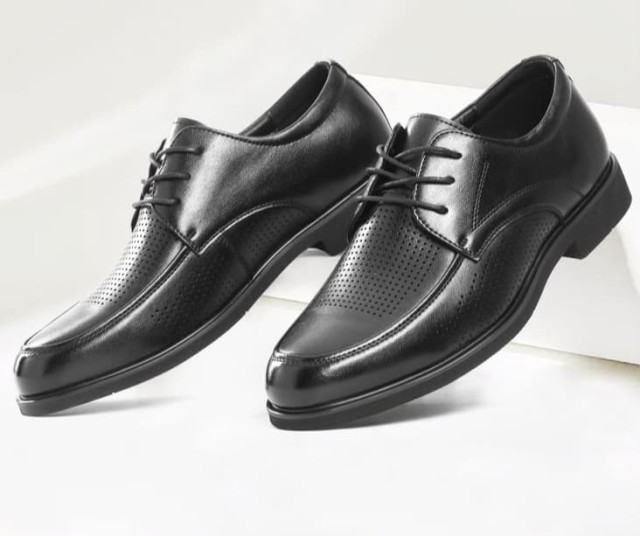When selecting footwear, most buyers focus on surface-level aesthetics—color, material, and silhouette. Yet the hidden construction method (Goodyear welted vs. cemented) profoundly impacts both longevity and design possibilities. This guide decodes how each technique influences style outcomes, helping you match construction to your personal aesthetic and lifestyle.
Goodyear Welted vs. Cemented: The Style Divide
Key Takeaway: Goodyear welting prioritizes durability and classic proportions, while cemented construction enables bold, contemporary designs.
Goodyear welted shoes use a leather strip (welt) stitched between the upper and sole. This centuries-old technique:
- Limits sole thickness to maintain structural integrity
- Favors rounded or chiseled toe shapes that accommodate the welt’s curvature
- Requires heavier materials, reinforcing traditional silhouettes like Oxfords or brogues
Cemented (glued) construction bonds the sole directly to the upper, allowing:
- Thinner soles for sleek profiles (e.g., Italian loafers)
- Experimental toe shapes (square, almond)
- Lighter weight materials ideal for fashion-forward designs
Case in Point: A study of 200 luxury shoes found Goodyear welted models dominated classic categories (80% of dress shoes), while cemented construction led in avant-garde styles (65% of designer collaborations).
Why Construction Dictates Design Freedom
The Durability-Design Tradeoff
Goodyear welting’s layered stitching restricts radical design changes but ensures decades of wear. Resoling—where the welt acts as a buffer between insole and outsole—preserves the upper’s original shape. Research shows welted shoes retain 90% of their structure after 5+ resoles.
Cemented shoes excel in:
- Seasonal trends: Glue allows faster production cycles for time-sensitive styles
- Minimalist aesthetics: Eliminating the welt creates cleaner lines
- Cost efficiency: Lower upfront price (though replacement costs add up)
Reflective Question: Do you value timeless versatility or the ability to frequently refresh your look?
Signature Styles: From Oxfords to Italian Loafers
Goodyear Welted Hallmarks
- Oxfords: The welt’s structured base complements closed lacing systems
- Boots: Storm welting (a Goodyear variant) handles rugged terrain while maintaining polish
- Monk Straps: Welted versions develop richer patinas over time
Cemented Standouts
- Penny Loafers: Glue enables the signature slim sole
- Sneaker hybrids: Cementing accommodates rubber/leather combos
- Metallic finishes: Adhesives bond better with synthetic materials
Pro Tip: Brands often use hybrid constructions—welted for stress points (heels), cemented for lightweight toes.
Matching Construction to Your Personal Aesthetic
Ask yourself:
-
Frequency of Use
- Daily wear → Goodyear welted (5+ year lifespan)
- Occasional statements → Cemented (replace every 2-3 seasons)
-
Style Preferences
- Classic/traditional → Welted structure enhances heritage details
- Experimental → Cementing unlocks unconventional shapes
-
Budget Considerations
- Long-term investment → Welted’s resole savings offset higher initial cost
- Short-term variety → Cemented’s lower price enables rotation
Step Into Precision Crafting
At 3515, we engineer footwear for distributors and brands who demand both artistry and endurance. Whether you’re sourcing timeless welted derbies or trend-forward cemented boots, our manufacturing expertise ensures every pair aligns with your vision. [Contact our team] to discuss scalable solutions tailored to your market.
Final Thought: Like a building’s foundation, shoe construction quietly determines what designs can—and cannot—stand the test of time. Choose the method that supports your stylistic ambitions.
Related Products
- Factory-Direct Wholesale Canvas Boots with High-Traction Rubber Soles
- Durable Military Combat Boots with Water Drainage for Wholesale & OEM
- Wholesale Durable Camo Canvas Shoes with High-Traction Rubber Soles
- Wholesale Mesh Steel Toe Safety Shoes with Dial Closure Factory Production
- Athletic Safety Shoes with Dial Closure & Steel Toe for Wholesale & Custom Manufacturing
Related Articles
- Why Vulcanized Soles Dominate Performance Footwear: Durability Meets Flexibility
- Why Vulcanized Soles Dominate Technical Skateboarding: A Science and Performance Breakdown
- How Vulcanized Soles Balance Style and Performance for Skateboarders
- How to Choose Work Boot Uppers That Match Your Job's Demands
- Why Vulcanized Soles Outlast: The Science Behind Durable Footwear



















